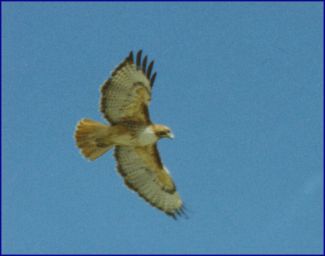

 5.4
Vision Statement
5.4
Vision StatementPUMA's vision in regard to wildlife resources is the preservation of biodiversity, especially sensitive species and species native to this montane region. This requires decreasing those factors which favor habitat generalists (such as nest parasites and nest predators). Habitat should be preserved for those interior forest breeding species of birds and mammals which are sensitive to the edge effect caused by roads and trails. Uninterrupted corridors should be maintained for animal movement as well as ample space for effective animal habitat (as defined below). It should be recognized that other species besides our own have a need for their own space.
“Effective habitat” (as defined by Boulder County and the Forest Service) is a function of road and trail density in a given area, where habitat effectiveness declines as the density of roads and trails increases. (For more information see Appendix 5.6.) No new roads and trails should be built in areas of County and Forest Service lands which currently serve as effective habitat for sensitive and endangered species and imperiled habitats. Where feasible, land management agencies should strive to improve habitat effectiveness by removing/relocating roads and trails which have negative impacts on sensitive and endangered species. Uninterrupted corridors for animal movement should be maintained. Many species naturally have a large range of movement which is essential to their survival. Others move only a small distance, but may be stopped by trails, roads, fences.
The public will need to be educated about the importance of preserving effective habitat. Hopefully, with their knowledge and support, we can prevent the Magnolia area from becoming fragmented further and restore sensitive habitat area to their original pristine state. Some roads and trails will need to be closed. Others will need to be relocated. There should be no net increase in roads and trails. The help of those who actively use the area for recreation should be enlisted to promote these ends. The land and its non-human inhabitants can only sustain a finite amount of human use without major degradation.
Once a particular human use of an area has been maintained for a few years it is very hard to reverse. The term "historical" is now variously applied to uses of the distant past and to uses of only a few years or a few decades. This concept is used to justify continuing that use, whether or not it causes damage to the wildlife resources of the region. There will always be pressure for greater and greater human encroachment upon our natural areas as our population continues to increase. We should not succumb to that pressure, but strive to maintain such a balance in our human use that our forests, grasslands, wetlands and the wild creatures whose company we now enjoy will be sustained.
 |
 |